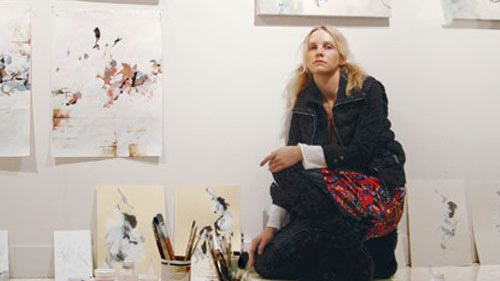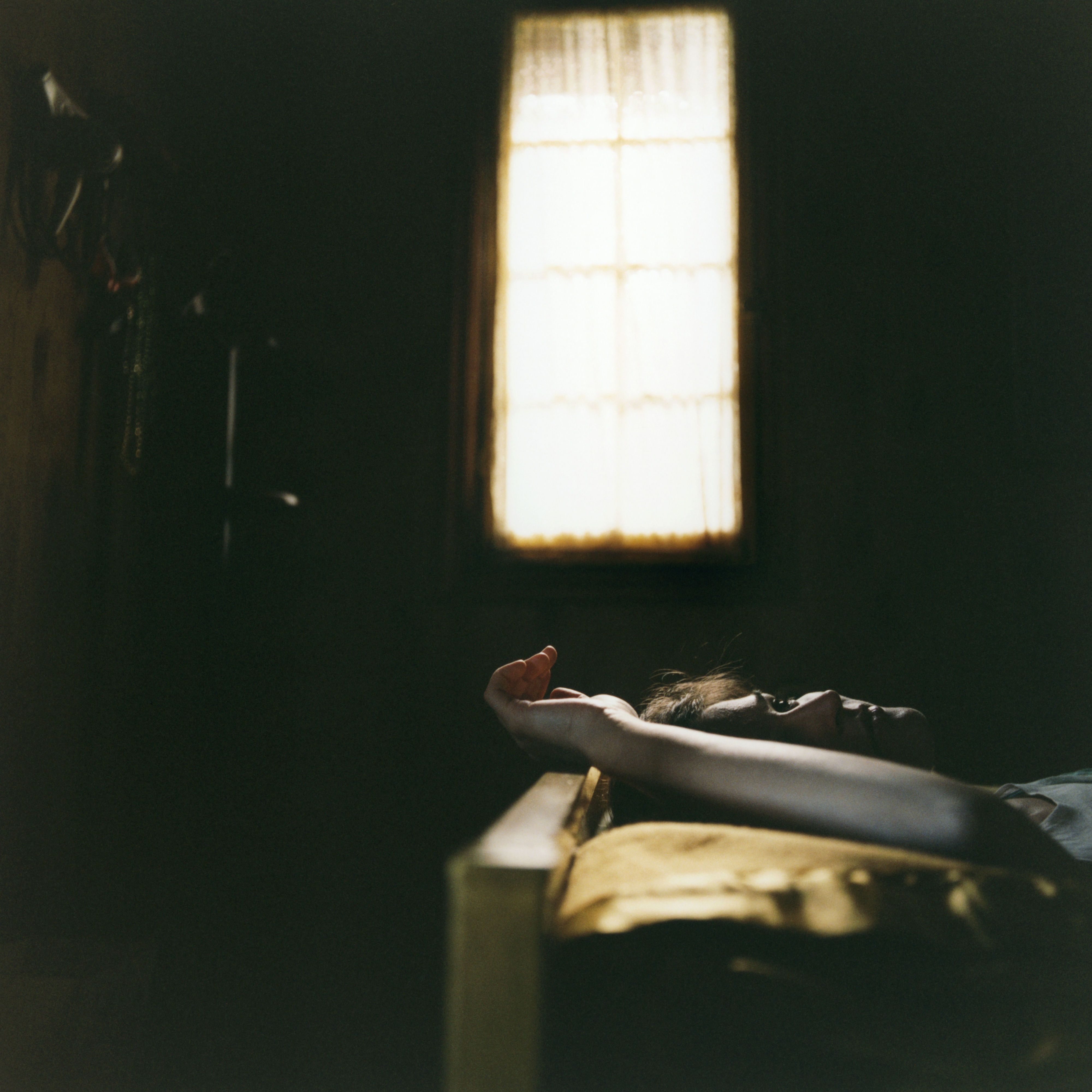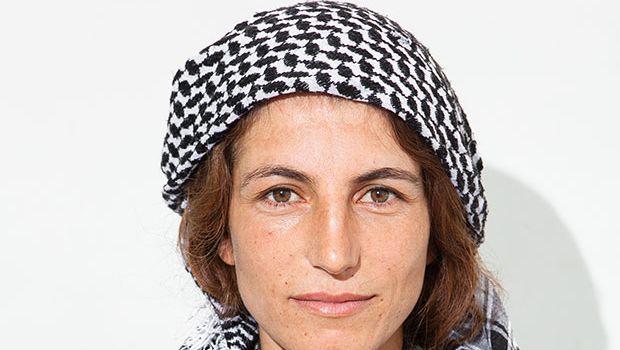More Than A Pretty Face: Anna Schuleit
German-born artist Anna Schuleit went from anonymous to Einstein virtually overnight, thanks to a call from the MacArthur Foundation announcing that she'd won a 2006 "Genius" grant for $500,000.

Name: Anna Schuleit
Age: 32
Job: Painter and installation artist
Location: Brooklyn, New York
Famous words: "The last thing I want to do is make mental patients feel violated for having suffered from an uncontrollable illness."
German-born artist Anna Schuleit went from anonymous to Einstein virtually overnight, thanks to a call from the MacArthur Foundation announcing that she'd won a 2006 "Genius" grant for $500,000. Schuleit, one of the youngest recipients of the prize, focuses on turning unexpected places-from hospitals to small islands-into oversize "canvases" for her work. While constructing Habeas Corpus, she wired an abandoned mental hospital to play the music of Bach and asked former patients to tell their stories; for Bloom, she carpeted the Massachusetts Mental Health Center with an arrangement of 28,000 flowers. Currently a fellow at the Radcliffe Institute at Harvard University, Schuleit uses her art to celebrate those who are often overlooked.
Q: Your artistic style is pretty unique- what do you call it?
A: There's a field called oral history, where people tell the stories of their lives in their own words. What I'd like to be is a collector of visual history, where people draw what they remember of their life experiences.
Q: Habeas Corpus was a 28-minute musical installation at a former mental hospital. How did it work?
A: The idea was to make the building "sing," to turn an abandoned structure into an instrument by filling the hollows and voids inside the building with voices, as you would use the hollows inside a guitar or violin. I chose a recording of Bach's Magnificat, played through strategically located speakers, making it seem as though the music poured through windows and doors.
Q: Why the interest in mental illness?
A: There's this quote, "The degree of civilization of a nation can be measured by the way it treats its weakest citizens." I've always been drawn to telling the stories of those citizens.
Q: $500,000 is a lot of cash! Has it changed your approach as an artist?
A: As a visual artist, there are many ways to stay afloat. You can take another job, which I have a million times, or you can try to make your work the money-earning source. If I'd signed on with a gallery, it would have been easier, but I also would never have been able to go "underwater" for long stretches of time, when I needed to work without any outside input. I was more or less penniless-making $10,000 or $11,000 a year, which is about poverty level in New York state.
Q: Tell us about your next project, in Boston Harbor.
A: It takes place on an island that's uninhabited, but like an old piece of leather, it's marked by layers of previous human use. The installation uses glass and reflective surfaces to tell the story of the island's former residents- about the absence of these people and what marks they made on the land that are still visible today.
Stay In The Know
Get exclusive access to fashion and beauty trends, hot-off-the-press celebrity news, and more.
To learn more about Schuleit's work, log on to anna-schuleit.com. For information on how to apply for a grant through the MacArthur Foundation, log on to www.macfound.org.
-
 'Ransom Canyon' May Give Texas the Small-Town Drama Treatment, But That's Not Where It Was Filmed
'Ransom Canyon' May Give Texas the Small-Town Drama Treatment, But That's Not Where It Was FilmedHere's what to know about the real-life ranches featured in the Netflix series.
By Quinci LeGardye
-
 I Predict These 23 On-Sale Wardrobe Staples From Nordstrom Will Be Sold Out Next Week
I Predict These 23 On-Sale Wardrobe Staples From Nordstrom Will Be Sold Out Next Week23 Must-have shoes, tops, skirts, and more.
By Brooke Knappenberger
-
 Fans Can't Stop Talking About This Rarely-Seen Royal After Easter Appearance
Fans Can't Stop Talking About This Rarely-Seen Royal After Easter AppearancePrince Edward and Duchess Sophie's son shocked royal watchers with his grown-up look on Easter.
By Kristin Contino
-
 Creating for Change: Art as Activism
Creating for Change: Art as ActivismThree artists on how their work resonates in an increasingly politicized world
By Sangeeta Singh-Kurtz
-
 I Lost My Virginity to Rape and Didn't Even Know It
I Lost My Virginity to Rape and Didn't Even Know ItI thought he was my friend—I was wrong.
By Jenn Jackson
-
 These Remarkable Women Are Fighting ISIS. It's Time You Know Who They Are
These Remarkable Women Are Fighting ISIS. It's Time You Know Who They AreThese Remarkable Women Are Fighting ISIS. It's Time You Know Who They Are
By Elizabeth Griffin
-
Somaly Mam's Story: "I Didn't Lie."
An explosive report in Newsweek last spring raised questions regarding the legitimacy of Cambodian anti-trafficking activist Somaly Mam, tainting the nearly two-decades-long work on behalf of victims that catapulted her into the global spotlight. But how do the allegations hold up? In her first interview since the scandal dominated headlines—and left her career and reputation in shambles—Mam tells her side of things.
By Abigail Pesta
-
YOU DECIDE: Who Is Changing the World
Features YOU DECIDE: Who Is Changing the World
By Marie Claire
-
 31 Things We've Learned from Kirsten Gillibrand
31 Things We've Learned from Kirsten GillibrandFeatures U.S. Senator Kirsten Gillibrand challenges women to become major players.
By Marianne Schnall
-
 20 Women Who Are Changing the Ratio
20 Women Who Are Changing the RatioFeatures To the ceiling-smashing, see-it-to-be-it badasses spotlighted here, we salute you
By Marie Claire
-
 Who We Love: Georgina Chapman
Who We Love: Georgina ChapmanThe Marchesa designer and cofounder raises awareness for the plight of Syrian refugees
By Michelle Guerrere